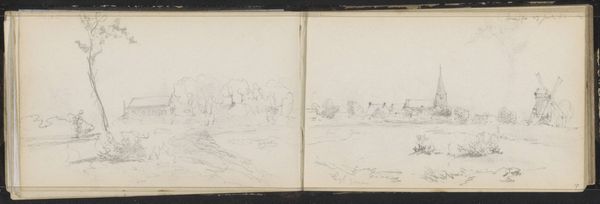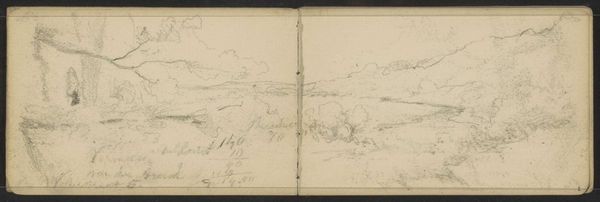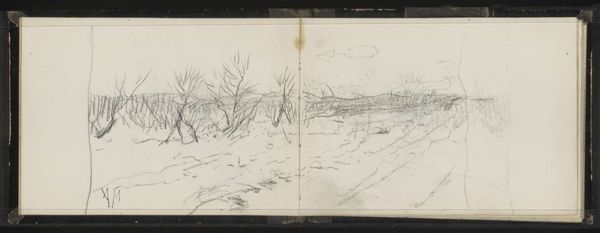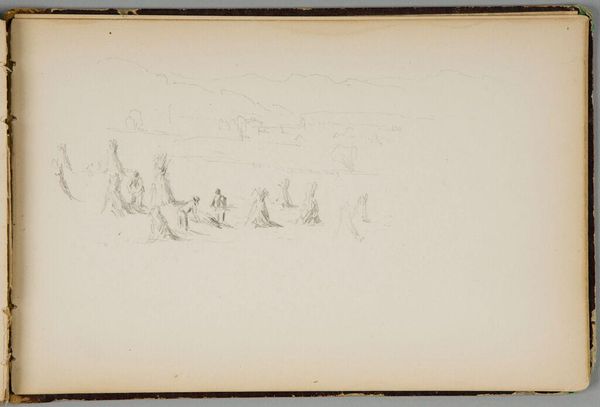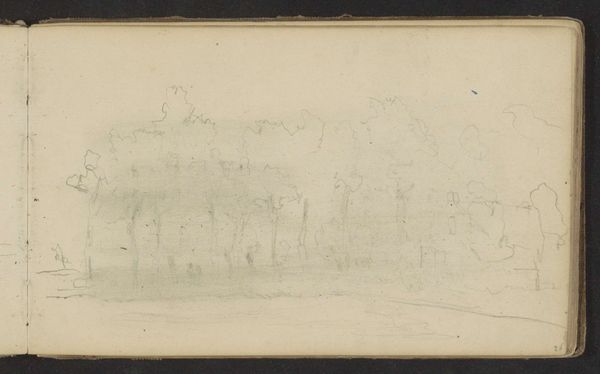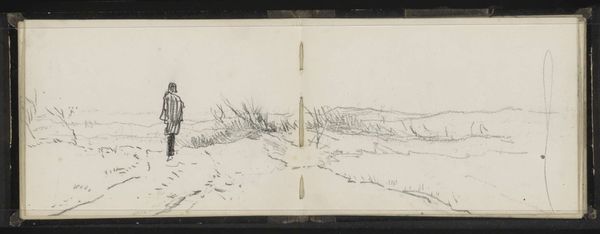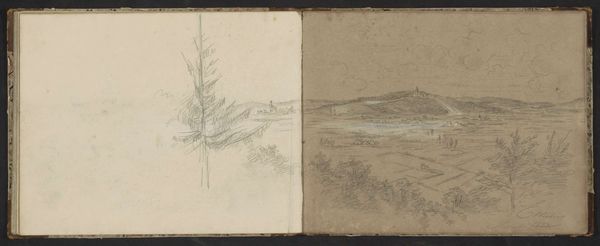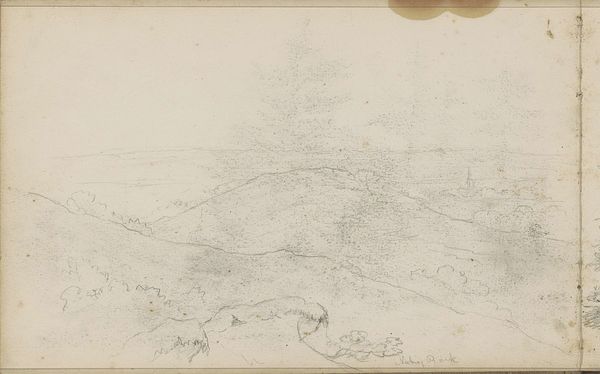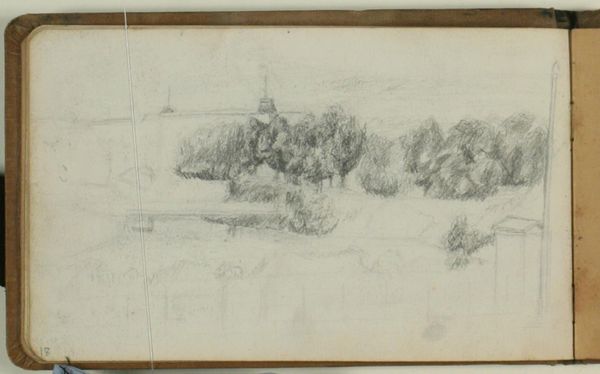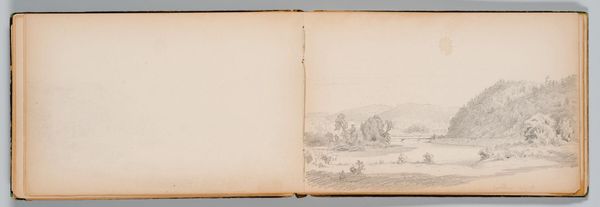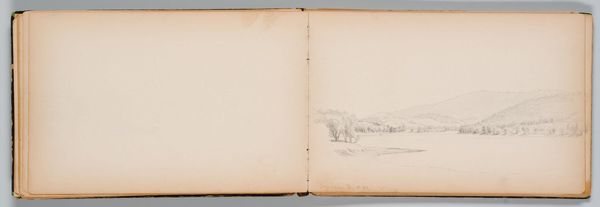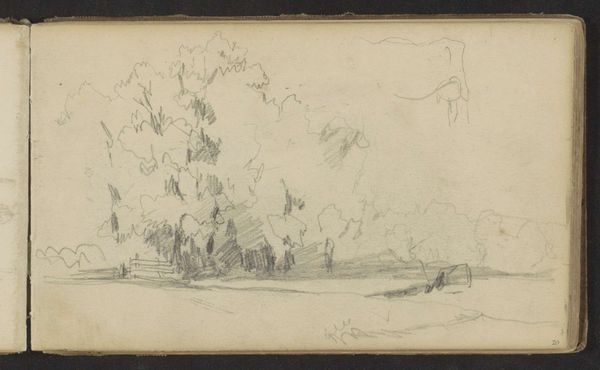
drawing, paper, pencil
#
drawing
#
toned paper
#
sketch book
#
incomplete sketchy
#
hand drawn type
#
landscape
#
paper
#
personal sketchbook
#
fading type
#
romanticism
#
pencil
#
sketchbook drawing
#
watercolour bleed
#
sketchbook art
#
watercolor
#
realism
Copyright: Rijks Museum: Open Domain
Editor: This is "Kapellenberg te Rozendaal" by Johannes Tavenraat, created in 1839. It's a pencil and watercolor drawing on paper from a sketchbook, currently held in the Rijksmuseum. The image looks like a quick sketch capturing the bare essentials of the landscape. What strikes you most about its composition? Curator: I am immediately drawn to the contrast between the two pages. The left presents a somewhat blurred, indistinct rendering, predominantly in muted tones. This opposes the clear, precise linework of the right page. Observe how the artist delineates form through strategic hatching and cross-hatching. The tonal range achieved, especially given the medium, is remarkable, isn't it? Editor: Yes, it’s like two different artists or even two different times of day! The stark contrast creates a sense of imbalance. Curator: Imbalance, precisely! Notice also the positioning of the horizon line, set high on both pages, emphasizing the flatness of the land. However, on the right, the steeple provides a crucial vertical counterpoint, disrupting what could become a monotonous horizontal plane. The placement of the buildings is intentional. It serves to direct the eye. How does the handling of light and shadow contribute, do you think, to its formal qualities? Editor: It seems as if there isn't too much contrast between the objects and shapes in the drawing, as if a sort of fading happens throughout. Curator: Precisely. Observe how Tavenraat employs delicate washes of watercolour to model form, focusing not on stark contrasts but subtle gradations to create atmospheric depth. The subtle rendering allows you to read it almost as a notation of form and line. A recording, rather than a complete illustration. Editor: I see now how the piece achieves its beauty through contrasting the different structural elements. Curator: Indeed. Through this close examination of line, form, and light, one discovers the intrinsic qualities that make the artwork unique, irrespective of any narrative or contextual association. It showcases the strength and purpose of simple sketches.
Comments
No comments
Be the first to comment and join the conversation on the ultimate creative platform.
